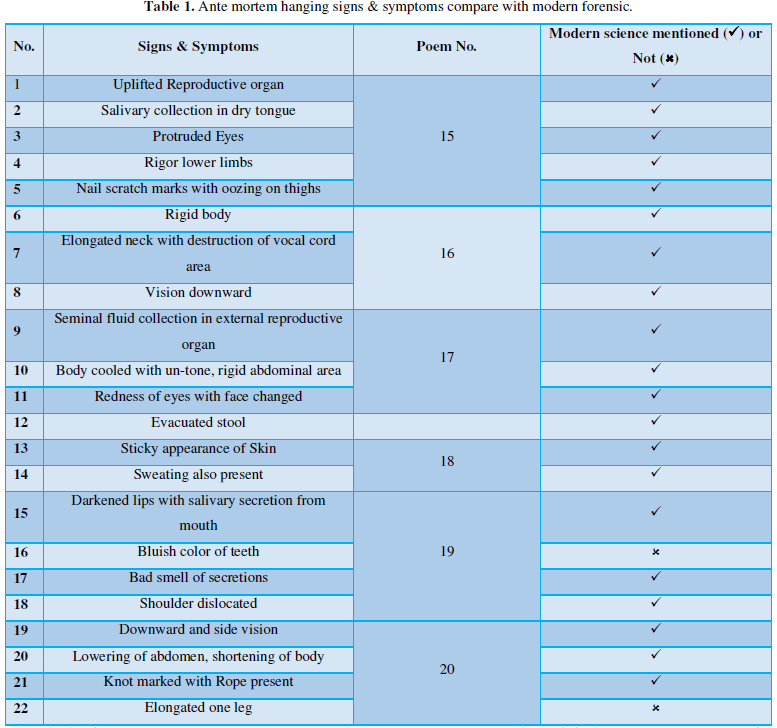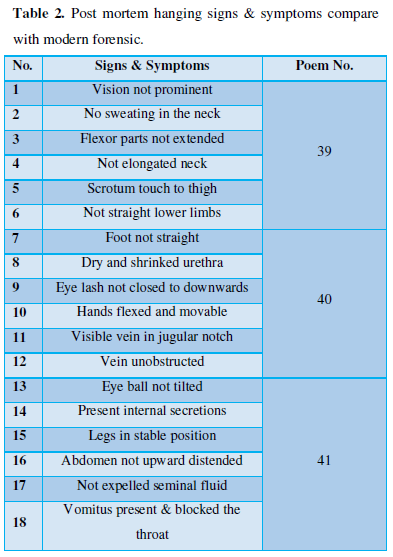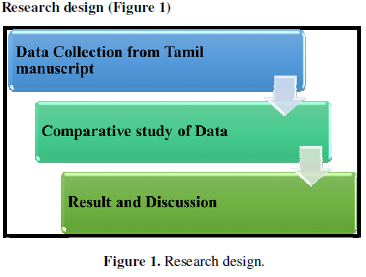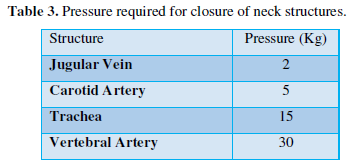Research Article
Forensic Science on Hanging in Ancient Siddha Tamil Text – Systematic Comparative Study
5675
Views & Citations4675
Likes & Shares
Hanging is a form of strangulation where a noose is pulled tight around the neck by the person's own body weight. Objectives were to compare the signs and symptoms of Ante-mortem &Post-mortem hanging and to reveal the ancient point of view in forensic science of Siddha medical system to the modern world. This was a Literature Review research study where the Research data source is “nantheesar ahalamarana nool” and Research Data is the Text References of selected literature. Data are collected from authenticate siddha text books which were published by well-known publisher field in siddha medical field. 22 signs &symptoms in Ante mortem hanging and 18 signs & symptoms in post-mortem hanging were found in siddha medical system. 20 signs &symptoms in Ante mortem hanging were matched with the modern forensic science. Concluded as Siddhar Nantheesar was a forensic expert in ancient era who has written a documentary book in Tamil which included every forensic science aspect. Therefore, have to go through the ancient manuscripts deeply to solve so many unanswered questions easily in forensic manner.
Keywords: Forensic Science, Hanging, Siddha Tamil manuscript
Abbreviations: Dr.: Doctor; %: Percentage; No.: Number; O2: Oxygen; Kg: Kilogram
INTRODUCTION
Hanging is a form of strangulation where a noose is pulled tight around the neck by the person's own body weight. The noose compresses the airways, cutting off the supply of oxygen to the lungs. It also compresses the carotid arteries, which carry blood to the brain. Both mechanisms cause asphyxia, in which body and brain are deprived of oxygen. However, asphyxia is not always the cause of death in hanging. In some cases, the pressure on the neck causes vagal inhibition, a reflex that leads to cardiac arrest. The forensic pathologist has to try to distinguish between hanging and other forms of strangulation and between suicidal, homicidal, and accidental hangings [1-4].
Most adult hangings are suicides. In children, hanging may occur by accident if they get themselves tangled up in clothes or a harness. Homicidal hanging is very rare and the generally the victim needs to be unconscious or intoxicated for such an act to occur. The ligature, that is, the material used to make the noose and suspend the victim, usually consists of whatever is at hand [1-6,8-10]. Ropes, belts, and electric flex are among the most common ligatures in hangings. Clothing, washing lines, and even dog leads are sometimes used. The victim may use a fixed knot or a slip knot, the latter being particularly efficient at compressing the airways and blood vessels because it tightens so quickly under gravity [8-10].
Some hangings take place from a high point of suspension, where the body swings freely under gravity with the feet off the ground. However, hanging can also occur with the person kneeling, sitting, or half lying, from a relatively low point of suspension such as a doorknob or bedpost. The weight of the chest and arms is enough to provide fatal pressure on the neck; suspension of the whole body is not necessary. A tree is the most common suspension point in hangings occurring outdoors, but bridges or climbing frames have also been used. Indoors, there is a large range of suspension points including doors, banisters, rafters, and loft hatches, or practically any raised object. The circumstances of the hanging influence the signs on the body and the actual cause of death [8-13] (Table 1).


Suicide by hanging in prison is a particular problem. Obvious ligatures such as ropes or flex are clearly not made available. However, desperate people will fashion ropes out of bedclothes or their own clothes. Two of Britain’s most notorious killers took their own lives by hanging in prison. Fred West hanged himself with a ligature made of strips of clothing in 1995, seemingly to avoid trial. In 2004, the serial killer Dr Harold Shipman used bedclothes to hang himself from the window bars of his cell in Wakefield Prison [8-10].
An autopsy of a hanged body will often reveal neck markings. The nature of these markings depends on the type of noose. Few or no marks may be found with a noose made of a soft material like bed sheets. A rope or cord noose will, however, leave a deep furrow, often with accompanying abrasions and contusions [10]. Hanging from a high suspension point leaves diagonal marks on the neck like an inverted V, which do not run around the full circumference of the neck. The point where the noose meets the vertical part of the rope is pulled up and away from the body and does not leave a mark on the neck. This can be used to distinguish a hanging from a manual strangulation. However, in a hanging from a low suspension point, the marks on the neck tend to be horizontal rather than diagonal and may look more characteristic of a manual strangulation [1-5,9-11].
High hangings are more likely to cause death by vagal inhibition, owing to the sudden pressure on the neck. The victim tends to be pale in such cases. A low hanging is more likely to lead to asphyxia and there may be some facial congestion and a purple protruding tongue. Asphyxia in hanging is usually related to the compression of the carotid arteries, rather than blockage of the airways. Petechial hemorrhages, caused by blood leaking from capillaries in the eyes owing to the pressure on the neck, are typical of many strangulations, but not often found in a hanging. Their absence can therefore help distinguish a hanging from other strangulations. The body may also show lividity due to pooling of blood in the legs, forearms, and hands [11-13].
In judicial execution by hanging, the body usually drops from several feet, which causes disruption of the cervical vertebrae (Table 2). The cause of death, if the execution if correctly carried out, is disruption of the spine rather than asphyxia. Fractures of the cervical vertebrae are not often seen in suicidal, homicidal, or accidental hangings, unless the body has dropped through some distance [5,12,13].
In cases of suspected hanging, the pathologist will also carry out a toxicological analysis of the body. Drugs or alcohol sometimes play a role in hanging. It is not an easy form of homicide and a perpetrator may try to "knock out" or subdue the victim before applying the noose. In cases of suicide, the victim may drug himself or herself in an attempt to summon up the courage to carry out the act [6,11,10].
In this manner, developed forensic science defined particular signs & symptoms for hanging in the western medical system. On the other hand, in the ancient era, Siddhars’ denoted so many things, regarding the forensic science in manuscripts. This study re-searched many Tamil manuscripts which were deal with forensic science. The Siddha Text book “Nantheesar Ahalamarana Nool” described well about forensic & toxicological aspect in Tamil stanza at ancient era in palm leaves manuscripts.


METHODOLOGY
Research type
Literature Review
Research data source
“nantheesar ahalamarana nool” [7]
Research data
Text References of selected literatures
Data collected from authenticate siddha text book which published by well-known publisher and eminent publishing field in siddha medical field.
Data sources- as selected Literatures: Siddha aspect
Research design (Figure 1)


RESULTS
Main source of Siddha Tamil manuscript is “nantheesar ahalamarannool”, edited by R.C. Mohan, published by- Thaamarainoolagam, Chennai, 3rd Edition- July, 2013.
From the Tamil stanza converted into TAMIL TRANSLITERATION with ISO 15919;
tūkkiṭṭucettapiṉattaikkaṇṭukurikuṉamariya:[7]
toṉrumkuṉattaiyṉikkeḻu vāṅkumkuriyumullāka
varalumnākulnīrṉiṭkum pāṅkaikkaṉṉumparuviḻiyāy
pātamnemirntumaram poleāṅkaiillututuṭaitaṉile
āṟṟucceṉṉīrkaṇṭiṭume. (15)
kāṉumcūraivalitilaḻuttu kaiyumkālumcaṭṭuvampol
toṉumcaṅkupūṭṭuviṭṭu tulaṅkumkaḻuttumtāṉṉīṇṭu
peṉumpārvaikīlṉūkki periyumuyurumkurivaḻiyāy
nāṉumivaikalkaṇṭarintu nāṭṭilitaṉaikkūriṭume.
(16)
kūrumkuriyilintiriyam koḻai pole payntirukkum
vīrumaṭaṅkimelvaiṟṟil valittekāṭṭumkuṭaltaṉayum
cīrumkaṉṉummukamatuvum ciṅkummalamumpurantallum
ērumkaikālṉimirntuviṭum iḻuttukkaḻuttumnīṇṭiṭume.
(17)
nīḻumkaḻuttiṉ melpākam ṉeṭiyavaraipoltāntoṉri
cūḻumpiciṉpolūṉpaṟṟI cuṭariṉ olipolviyarttirukkum
vīḻummalameilakiṉiṭkum veliyilkoḻaivaṭintuviṭum
ālumariyatutuṭalvīrām arivīrtūkkilmarittateṉṟe.
(18)
marittapiṉattaipārtiṭukil vāyumiruṇṭukolaiyurum
karittamukampolṉirammāri karukkumpallumnīlamatāy
virittakaṉkalpaṉcamaṭaiyum viḻiyulmaṉiyumcarivākum
tarittakōḻaivāṭaiyurum tāṉetōlumtāḻntiṭume.
(19)
tāḻintatōlumuyarṉtiṭukil caṭakkeṉ ruṭaṉepūṭṭuviṭum
ālntavayirraṭiciruttirukkum arukilcarintupāryaiyurum
nālntakayarumpirimurukkāy nāṭṭilorkālṉīṇṭirukkum
cūlntakuṉaṅkaleṉṉaṉcum cūṭcattuṭaṉepārttiṭume.
(20)
Post mortem hanging explained as
அடித்துக்கொன்றுகட்டித்தூக்கினால்அதன்குணம் [7]
அடித்துக்கொன்றுதூக்கிவிட்டால்
அறியக்குறியைச்சொல்லுகிறேன்
விடுத்தகண்ணாய்க்காணாது
வியர்வைகழுத்தில்தோன்றாது
மடித்தவரையும்கவிழ்த்தடத்தில்
மறந்துகாணும்கழுத்துனீட்டா
பிடித்துத்துடையில்விரைகாணும்
பாதமீரண்டும்நிமிராதே. 39
HANGING: MEDICO-LEGAL ASPECTS
Types
- Complete Hanging- Hanging leads to asphyxia which is caused by suspension of the body by a ligature encircling the neck. The constricting force is the weight of the body.
- Partial Hanging- The bodies are partially suspended; the weight of the head (5-6 kg) acts as the constricting force.
- Typical Hanging- In typical hanging, the ligature runs from the midline above the thyroid cartilage symmetrically upward on both sides of the neck to the occipital region.
- Atypical Hanging- When the Knot is placed at site other than that seen in typical hanging.
Fatality: The usual period is 3 to 5 minutes and Fatal hypoxia takes place when O2 Level fall below 20% of normal.
POST MORTEM APPEARANCE
External Features: The ligature mark in the neck is the further most significant and definite sign of death in hanging. In 80 percent cases, the ligature mark is positioned above the level of thyroid cartilage between the larynx and the chin. It is obliquely located and does not completely enfolds the neck. Face is choked, gasping up and bluish. In utmost cases eyes are obtruded and the conjunctiva is congested. Frequently the pupils seem dilated. Tongue is projected and it may be fixed between the teeth. Dribbling of saliva from the angle of mouth is the most important & surest external sign of ante mortem hanging (opposite side to that of knot). Le faciessympathique: It is a dynamic symbol of ante mortem hanging. When the knot compresses the Cervical Sympathetic trunk, the eye on that side remain open and the pupil is dilated. Seminal emission is common, in case of ante mortem hanging [3-6,8-13].
INTERNAL FEATURES
Fracture Hyoid Bone; Abduction fracture or Anterior Compression Fracture is seen in hanging: Hyoid bone is fractured in 15-20% cases are mostly seen in persons above 40 years. Most common site of fracture of hyoid bone in hanging is at junction of the inner two third and outer third of greater cornu (Inward compression fracture or Adduction fracture seen in case of throttling) [8-13].
Judicial Hanging
Legal death sentence is conceded out by hanging the criminal, in India. The cause of death in judicial hanging is (Brain Stem Damage) fracture dislocation at Atlanto-occipital joint. The knot is sited below the chin, the distance of rope from the point of suspension is equal to the height of individual. There is a rapid drop, resulting in fracture and dislocation of Upper Cervical Vertebrae [8-13].
Autopsy findings
Ligature Mark: Ecchymosis and Congestion of neighboring skin may be seen, commonly dry and firm, imprinted of the skin by way of a pressure abrasion and bruised due to pinching.
External features: Face may be congested, puffed up bluish, Bloody froth of the mouth, Post mortem lividity is seen in the distal parts of upper and lower limbs. If the body remains suspended for a long time, petechial hemorrhages are seen on the lower limbs. Head is tilted away from the knot. Dribbling of saliva from the angle of the mouth. The tongue is protruded and may have been bitten and the eye on that side remains open and the pupil is dilated. It is called as; le facie sympathique [1-6,8-13].
Neck Dissection: Blood often extravagates into the subcutaneous tissues of the neck, beneath the ligature marks, Contusion of sternocleidomastoid and platysma may be present, the intima of the carotid may be burst transversely, Hyoid bone fractured, Indication of congestion, stasis and hemorrhage, Damage of larynx and fracture - dislocation of cervical vertebrae are common. Punctate hemorrhages may be present in the laryngeal mucous membrane [1-6,8-13] (Table 3).
DISCUSSION & CONCLUSION
According to the result, the ancient text clearly describes ante-mortem (22) and post mortem (18) hanging separately in Tamil Stanza. In this aspect, only two ante mortem signs & symptoms are not in the modern forensic science but other 20 signs were matched with ancient Tamil manuscript. 90% of ante mortem signs & symptoms in both system text books perfectly matched by this research. Old Tamil poet defined perfectly of the signs of suicide hanging. It is clearly noted that eye, neck, mouth, salivary secretion, head position, skin texture, abdomen position, markings, reproductive organ and smell are described clearly in Tamil stanza which all absolute matching in modern forensic science.


Ancient Tamil forensic experts recorded everything as help to legal issues. Siddhar Nantheesar was a forensic expert in ancient era and he has written a documentary book in Tamil which includes every forensic science aspect. Therefore, to going through the ancient manuscripts will be able to find answer to so many unanswered questions easily.
CONFLICT OF INTERESTS
Author declared that there is no conflict of interests of this research.
- Adelson L (1974) Homicide by cervical compression and by drowning, asphyxial deaths. In: The Pathology of Homicide, Charles C Thomas, USA. pp: 521-575.
- Bhat VJ, Palimar V, Kumar PG (2006) Reliability of postmortem lividity as an indicator of time since death in cold stored bodies. Medicolegal Update 6: 5-7.
- Dalal JS, Tejpal HR, Chanana A, Kaur N (2006) Medicolegal study of rigor mortis to estimate postmortem interval. J Indian Acad Forensic Med 28: 49-51.
- Diagnosis of brain death. Statement issued by the honorary secretary of the conference of medical Royal Colleges and their Faculties in the United Kingdom on 11 October 1976. (1976) BMJ 2: 1187-1188.
- Dikshit PC, (2007) Textbook of Forensic Medicine and Toxicology 1, Peepee Publishers and Distributors (P) Ltd., New Delhi. pp: 35-46.
- Gordon I, Shapiro HA (1982) Forensic Medicine-A Guide to Principles 2, Churchill Livingstone, Edinburgh. pp: 1-63.
- Mohan RC (2013) “nantheesar ahalamarana nool”, Thaamarainoolagam, Chennai. pp: 3.
- Nandy A (2005) Principles of Forensic Medicine 2, New Central Book Agency (P) Ltd., Calcutta. pp: 133-73.
- Parikh CK (1995) Parikh’s Textbook of Medical Jurisprudence and Toxicology 5.CBS Publishers and Distributors, Bombay. pp: 130-79.
- Pillay VV (2004) Thanatology. In: Textbook of Forensic Medicine & Toxicology, 14, Paras Publishing, Hyderabad. pp: 95-112.
- Reddy KSN, Suguna DK (2003) Death and its causes. In: The Essentials of Forensic Medicine & Toxicology, 22., Hyderabad. pp: 108-21.
- Simpson K (1972) Changes after death. In: Forensic Medicine 6. The English Language Book Society and Edward Arnold (Publishers) Ltd, Great Britain. pp: 7-17.
- Vij K (2005) Death and its medicolegal aspects. In: Textbook of Forensic Medicine and Toxicology 3. Reed Elsevier India Pvt. Limited, New Delhi. pp: 105-48.
QUICK LINKS
- SUBMIT MANUSCRIPT
- RECOMMEND THE JOURNAL
-
SUBSCRIBE FOR ALERTS
RELATED JOURNALS
- International Journal of Surgery and Invasive Procedures (ISSN:2640-0820)
- Journal of Alcoholism Clinical Research
- Journal of Renal Transplantation Science (ISSN:2640-0847)
- Journal of Immunology Research and Therapy (ISSN:2472-727X)
- Stem Cell Research and Therapeutics (ISSN:2474-4646)
- Dermatology Clinics and Research (ISSN:2380-5609)
- Journal of Clinical Trials and Research (ISSN:2637-7373)


